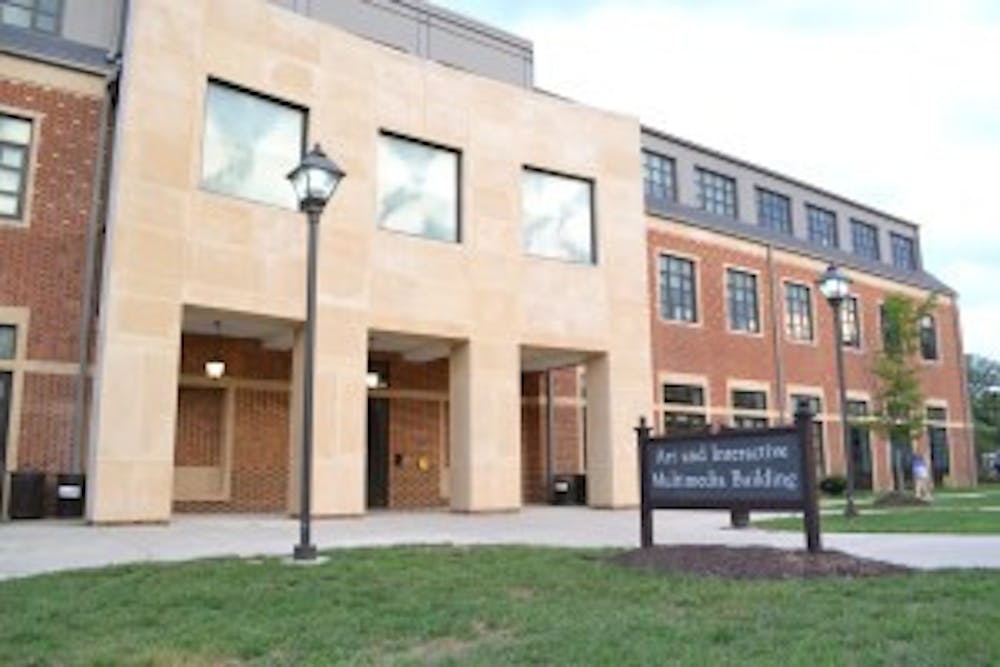By George Tatoris
Sports Assistant
Before teaching at the College, professors Kim Pearson, Philip Sanders and Ursula Wolz were scattered across three different fields and three different states. Pearson was in New Jersey writing about new technology at Bell Labs, Wolz was at MIT’s Media Lab in Massachusetts and Sanders was in New York using technology to create art.
Despite the differences, the brilliant ideas from all three professors would soon come together and give rise to the College’s fascinating yet bewildering department: interactive multimedia (IMM).
“IMM is essentially people of varying backgrounds coming together to make cool stuff,” said IMM graduate Josh Lewkowicz (‘15), who is now working at DreamWorks Animation. “It’s a bridge between art and technology. I’ve always felt the purpose of IMM is to give you the technical skills to take ideas and bring them to life with the proper tools and techniques.”

The major teaches students skills across technological fields. According to the College’s website, the major focuses on three main areas of interest: digital media, interactive computing and professional writing.
Lewkowicz chose to focus on cinematography, photography and video editing during his undergraduate years, but other students within the major can go for topics like graphic design, website design and even digital music.
The idea behind the IMM major sprouted from collaborative projects between the journalism, computer science and art departments.
One such project was “unbound,” an online publication that was started in the year 1996 and combined Pearson’s magazine writing class and Elizabeth Mackie’s graphic design class.
The magazine was run by students for years and can still be found at tcnj.edu/~unbound.
The idea for the major began to spread around campus and in 2003, a proposal was submitted to the school and the IMM major was born with Sanders as its coordinator.
“We were an experiment,” Pearson said, speaking of the early days of the major.
The major grew quickly, though, and in 2005, the College was one of three winners of a highly-coveted Microsoft grant worth $80,000 to fund a video game design major.
The interdisciplinary IMM major provided a perfect counterpart to the art of game-making, which calls upon skills from a berth of different areas, including digital arts, music and computer science.
Around this time, the major hired its first professor: Chris Ault.
While the three founders had their backgrounds in specialized fields, Ault was more of a generalist with a focus on graphic design.
Pearson put it bluntly: “Chris was the person we were looking for.”
Ault’s interests range from computer programming to design to music, which is reflected in the décor of his current office — in a corner toward the back of the room sits an old MacBook next to a miniature musical keyboard. He fiddled with a LEGO brick as he spoke.
“I kind of avoided being pigeonholed and focusing in on one, narrow thing,” Ault said. “I always like mixing everything together.”
Pearson noted that Ault already understood aspects of design that the founders thought IMM students should know.
As more students and professors funneled in, the major began to gain credence. No longer were they a bold experiment — interactive multimedia had a greater foothold as its own field developed around it.
Soon, IMM was its own department, with Sanders as its first chair.
In 2010, the department upgraded from the cold recesses of Holman Hall to the high-tech Art and Interactive Multimedia Building. Ault took over as chair for the next five years, followed by Assistant Professor John Kuiphoff in Spring 2015.
Meanwhile, Wolz left the school to start her own company, RiverSound Solutions.
For IMM to work, the catalog must upgrade each year, Ault said. Learning about outdated software does not prepare students for the job market.
“If we end up teaching the same class the same way two years in a row, it probably means we’re not being responsible enough,” Ault said.
Recently, the department added mini-courses taught by alumni that specialize in one specific skill.
Pearson said this new addition is essential. While it’s good to be a jack-of-all-trades, the professor said, students shouldn’t graduate as masters of none.
Alumnus Andrew Kuserk said such courses allow students to “have access to the more small and niche of what this program can teach.”
These mini-courses are the latest example of what Ault believes is the strongest element of the IMM department: community. And Kuserk found just that during his time with the department.
“No matter what, there is never going to be enough professors to cover every single topic in the IMM major, so there (are) going to be some holes,” Kuserk said. “The other students and their specialties is what will fill those holes. Learning from each other is one of the most important parts of being an IMM major.”







